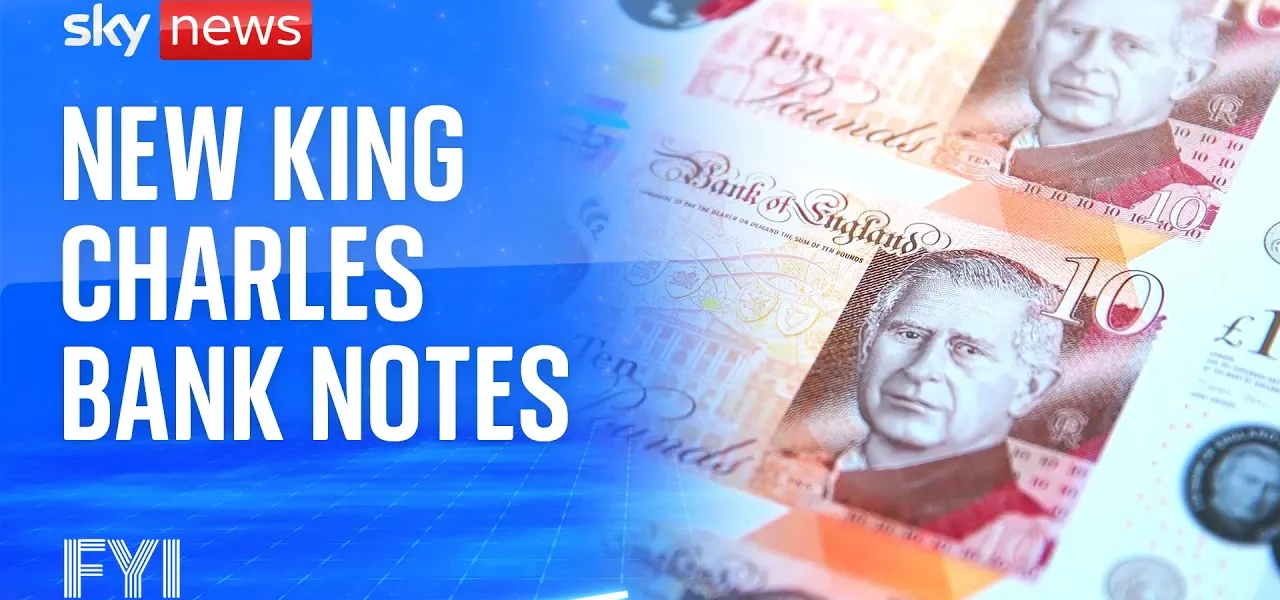Historic Transition of Bank of England Notes: From Queen Elizabeth II to King Charles III

In a landmark shift for the Bank of England, new banknotes featuring the portrait of King Charles III are being issued for the first time in a generation. This article delves into the significance of this change, the history of banknotes, and the future of cash in our society.
Introduction
The Bank of England has marked a significant milestone with the release of banknotes bearing the image of King Charles III. This historic event not only signifies a change in currency but also reflects on the evolution of banknotes over the centuries. Queen Elizabeth II’s likeness has graced British banknotes since 1960, and the transition to King Charles III represents a new era for currency in the UK. As we explore this transition, we will also look into the origins of banknotes, the role of technology in modern currency, and what the future might hold for cash transactions.
The Historical Context of Banknotes
The Birth of Banknotes
Banknotes have a rich history that dates back to the late 17th century. Initially, people deposited coins at the Bank of England in exchange for paper notes, which were easier to carry and exchange. The first recorded banknote was issued in 1697, and it marked the beginning of a new method of trade.
Evolution Through the Centuries
As banknotes evolved, they became more complex in design to prevent counterfeiting. The introduction of intricate designs and security features helped establish trust in paper currency.
- 1697 – First issuance of banknotes.
- 1960 – Introduction of banknotes featuring Queen Elizabeth II.
- Present – Transition to banknotes featuring King Charles III.
Transition to King Charles III
Significance of the Change
The introduction of banknotes with King Charles III’s portrait is not merely a cosmetic change; it symbolizes the continuity of the British monarchy and its role in the nation’s identity. Over 4.2 billion banknotes, amounting to approximately £80 billion, are currently in circulation, and this transition is a significant step in modernizing UK currency.
Legal Tender Status
It is important to note that existing banknotes featuring Queen Elizabeth II will remain legal tender, meaning they can still be used for transactions. This gradual transition allows the public to adapt without immediate disruption.
The Role of Technology in Cash Transactions
Decline of Cash Usage
While the new banknotes are being introduced, the use of cash has significantly declined. Increasingly, consumers are turning to digital payment methods such as bank cards and mobile payments for convenience.
Future of Cash
Despite the rise of digital payments, there remains a substantial segment of the population that still relies on cash for everyday transactions. According to recent studies, approximately 2 million people in the UK depend on cash for their daily spending.
Bank of England’s Perspective
To gain insights into the future of cash, we spoke with Sarah John, the Chief Cashier at the Bank of England. She emphasized the bank’s commitment to ensuring the availability of cash for those who need it while also overseeing the design and production of banknotes.
Sustainability and Innovation in Banknotes
From Paper to Polymer
The Bank of England has also made strides in sustainability by transitioning from traditional paper notes to polymer. This material is not only stronger and cleaner but also fully recyclable.
Recycling Process
When polymer notes reach the end of their life, they are collected and recycled into new products. This innovative approach helps reduce waste and supports environmental sustainability initiatives.
Conclusion
The transition from banknotes featuring Queen Elizabeth II to those of King Charles III marks a significant moment in British history, reflecting both tradition and modernity. As we move forward, the role of cash continues to evolve in a digital age. While cash may not be as prevalent as it once was, its importance remains for many individuals across the country. To stay updated on the latest in currency and finance, explore our related articles on the history of money and the future of cash.
“`




